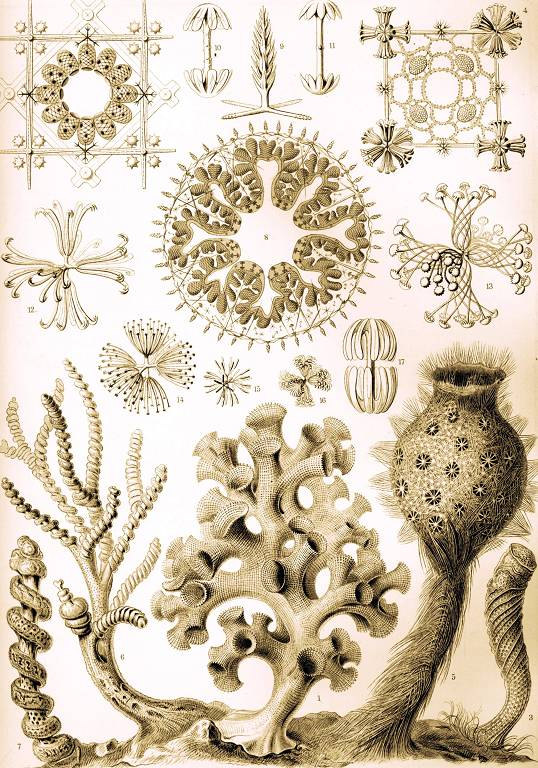Evolutionarily, sponges are considered to be the oldest and most ancestral surviving species of the multicellular animal lineage going back to more than 750 million years ago. They are notorious filter feeders. Famous German zoologist Ernst Haeckel quite accurately illustrated many sponges as early as 1872. They have an extraordinary capacity to filter dissolved nutrients through a specialized group of cells called choanocyte. Encrusting sponge tissues are made of choanocytes forming canals that converge at the openings called oscula where filtered water is discharged like a chimney.
Major groups of reef sessile animals, such as polychaetes (tube worms), bivalves and gastropods, barnacles, sponges, tunicates and corals can filter and accumulate particles from the surrounding water column. Sponges have a much greater role in reef ecosystems than previously known. They are especially efficient in converting much finer dissolved organic carbon into edible particles, providing an important food source for other organisms.
For example a species of Star Encrusting Sponge grows in the deep dark cavities beneath reefs, and 90% of their diet is composed of dissolved organic carbon. The sponge must filter vast amounts of organic carbon in order to survive in the nutrient poor environment it lives. reserachers have demonstrated that every day these sponges consume half of their own weight in organic compounds, yet they hardly ever grow. It turned out that choanocytes were shedding at a very high rate providing reef residents food to consume. Sponges therefore can widen the base of the trophic interactions by recapturing nutrients otherwise will be unavailable in the water column.
Sponges: Filter Feeding Made Visible from Shape of Life on Vimeo.
Knowledge of sponge biology and ecology has direct effect on management of aquatic ecosystems. When designing artificial reefs special effort should be made to create habitats suitable for their proliferation. Vertical hard structures can create upwelling water movement carrying dissolved nutrients. Algae may have hard time growing on vertical surfaces simply because of the diminished angle of light driving photosythesis. Algae can also be grazed very heavily by fish and sea urchins in areas where predators are in decline. Plant life therefore can be rather limited to flat well lit surfaces on reefs. Sponges can turn non-productive surfaces into an extra food source expanding the base of food chain.
This short documentary is the first of eight part PBS series called the Shape of Life made in 2002 by Sea Studios.



3 Comments